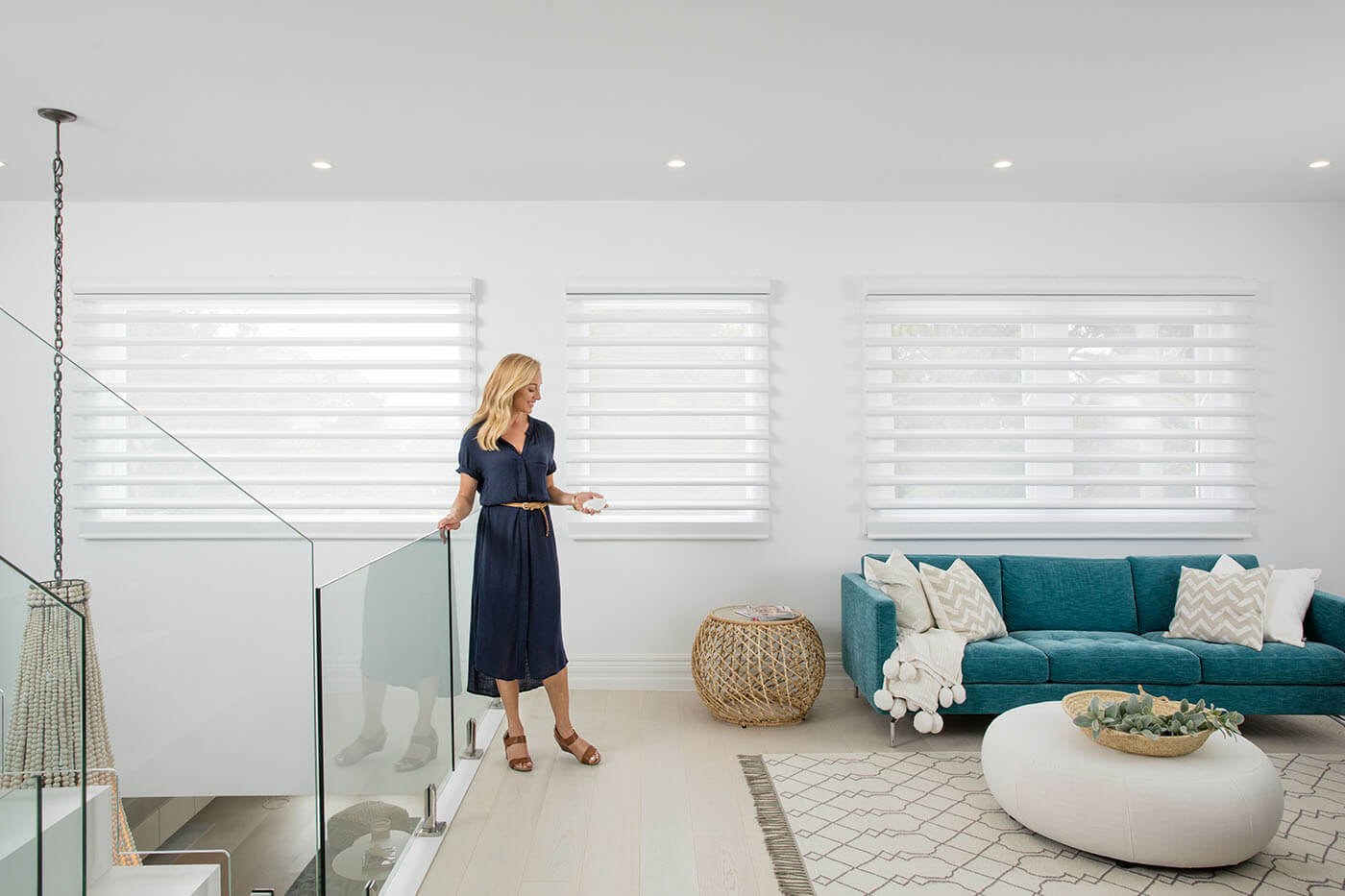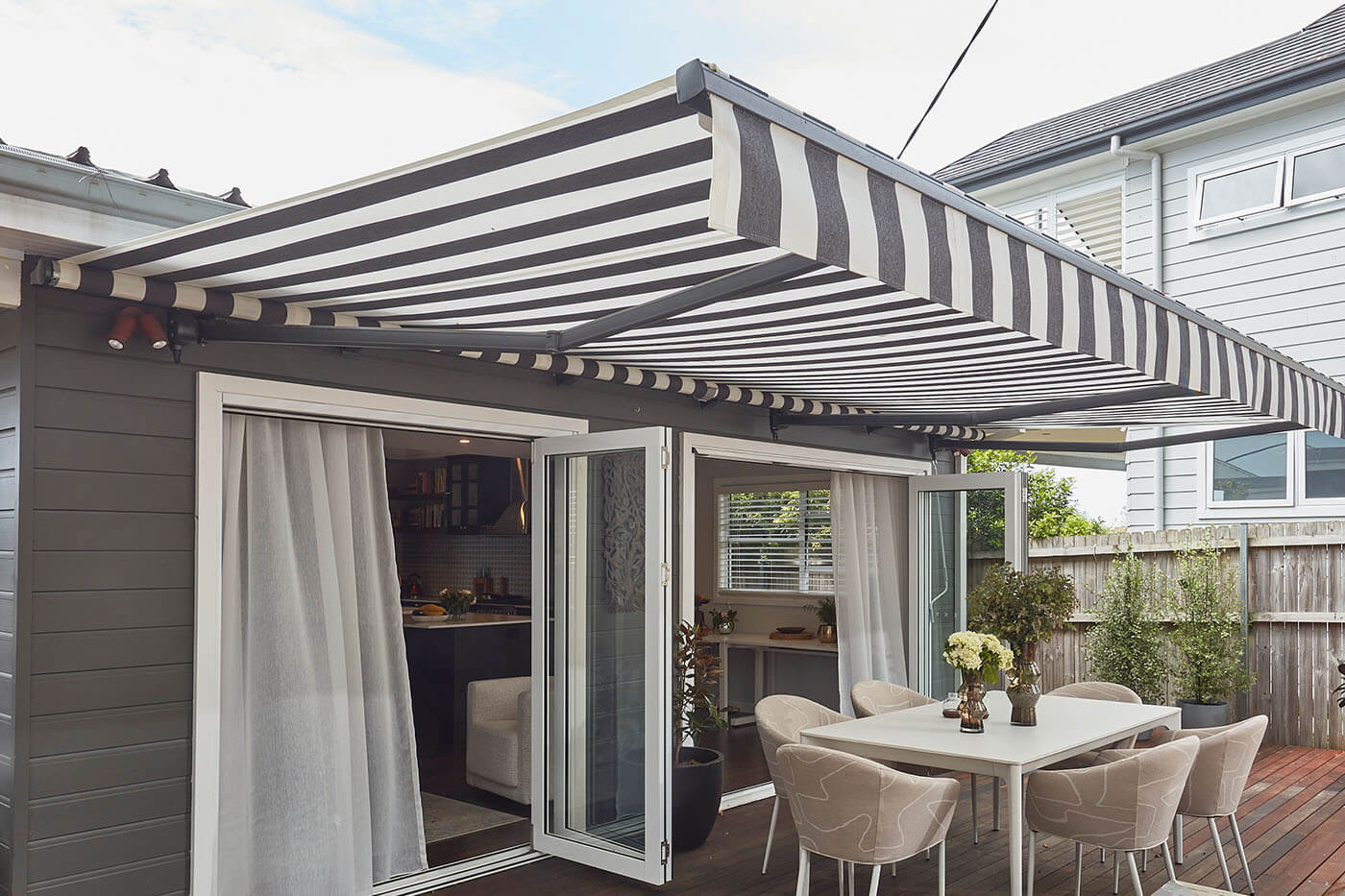125 Dalrymple Road Townsville, QLD, 4814
Whether you are preparing for a new build or a major renovation of your existing home, considerations such as budget and electrical and structural requirements are key in getting your window coverings right. Early planning will ensure you achieve an end result which is not only aesthetically pleasing but also practical and best suited for each application.
Don’t leave thinking about window coverings until the end of the project. They are a major part of any room and something that you will interact with every day. Early planning and budgeting will ensure you avoid having to compromise on your blind selections, which often results in buyers’ remorse.
We understand selecting the right window coverings can be difficult with so many choices in styles, operating systems, colours and opacities available to you.
For this very reason we highly recommend you utilise the invaluable advice and support of the trained Luxaflex® professionals. They will consider factors that so many people often forget such as window positioning, structural requirements and energy efficiency.
Your local Luxaflex® expert will also provide you with invaluable advice to pass onto your builder or electrician, even providing information on strata applications and energy efficiency requirements. This will help you set your budget early on in the process.
Size
Variables such as window heights and shapes and door configurations can limit the type of window covering options available. Size will also impact the cost of your blinds, large glass areas are favoured for the view and maximum light they provide, but in most cases, more glass means more expense to cover them. If you have a set budget or certain selection in mind, consult with an expert early on so you are able to revise your window or door schedule before it is too late.
Shape
Sloping tops, sloping bottoms, arches, triangles and other shapes can be covered with Luxaflex® Duette® Shades and PolySatin Shutters, subject to the exact size and specifications. Being able to cover a shaped window may dictate the entire product selection for that room, so options available should be well researched before going ahead with any custom builds.
Sliding or Bi-Folding doors and windows
There is often a misconception that there are no window covering options for sliding and bi-fold doors. However, there are blinds which can pull to the side to allow access, such as Luxaflex® Duette® Vertiglide Shades which stack left/right and are perfect for doorways, and PolySatin Shutters which operate in sliding, bi-fold and by-pass configurations to suit any window and door style. There are also a wide range of products which roll up and down and can be aligned with individual glass panes for a neat appearance.
Installation
Internal window coverings can be fitted in one of two ways, either in the reveal (within the window frame) which provides a neat finish, flush with the wall, or face-fitted (mounted to the outside on the wall). Factors such as window style, handles and winders may determine the type of installation possible. Glass louvres can be great but think about whether you can fit blinds into the window reveal when the louvres are open. Consult with an expert early on in the process to ensure the blinds you were hoping to include are able to be fitted in the way you would like them installed. This may allow you to revise your window type before it is too late.
Early on in the planning process you will need to decide whether you would like your window coverings, if possible, to recess into the ceiling cavity when raised. A Luxaflex® consultant will able to give your builder information on the sizes necessary for the cavity. Sizes will be determined by the product chosen and drop of the blind.
For products which slide from side to side and are face-fitted such as Luxaflex® Luminette® Privacy Sheers, you will also need to decide early on in the process if you want the blinds to retract back onto the wall space. If you want this option, you need to see how big the stack is going to be and design the wall next to the doorway or window to be large enough to fully accommodate this. The stack will vary depending on how wide the window covering is, and the type of product chosen.
With the focus on creating a ‘Smart Home’ on the rise, motorised window coverings have become one of the most popular methods of operation. Now, blinds have the potential to be both smart and beautiful, providing numerous benefits such as enhanced energy efficiency, child safety and convenience.
For skylights and high hard to reach windows, motorised control provides a convenient way to open and close your shades as required, via a remote control or app on your smartphone or tablet. These shades however, often require 240V power run to the location of the motor in the blind - this is why conversations with your builder and electrician in the early planning stages is key to ensure electrical is roughed-in to the right spot before it has gone too far in the piece and additional costs are involved to get the job done.
A Luxaflex® consultant will be able to provide you with the details to pass on to your electrician. In the case your project does not allow for wiring to be run, many products can still be powered via battery pack. An important point to also bear in mind is the home’s Wi-Fi quality, and the location and number of powerpoints in the house. Motorised products may require repeaters and range extenders plugged into powerpoints to assist in the operation of smart technology via the Wi-Fi in the home.
If you are thinking about creating a functional indoor/outdoor living area and want to shade your outdoor entertaining space with a folding arm awning, you will need to consider the structural elements early on in the building process. A structural support beam or roof rafters may need to be fitted, or the wall height extended to allow for a safe and successful install. The Luxaflex® consultant can talk you through what you need to advise your builder to ensure this option is possible, as adding this later can be costly and sometimes not possible at all.
Many councils require a minimum home energy rating. These requirements do vary based on location, as do the insulating benefits of window coverings. Internal blinds fitted in the reveal, close to the glass with a neat, tight fit will reduce the airflow passing through and around the window covering, providing improved heat control. The best internal products on the market for R-Value (the measure of insulation) are Luxaflex® Duette® Architella® Shades. The honeycomb within honeycomb structure of Duette® Shades creates a physical barrier, trapping heat within the air pockets and thus regulating the temperature in the home.
Lead times for custom made-to-measure window coverings will vary based on the product selected. Depending on your location, turnaround times can range anywhere from 1 to 12 weeks, with most being somewhere between 2 to 4 weeks. Although window coverings are one of the last things to go into the house (as the final check measure will not be able to proceed until all plastering, tiling etc is completed), they still need to be put in to the project timeline to ensure the product is delivered at the ideal time. Higher windows and external products may also require scaffolding or a crane to install, so be sure to coordinate with the builder and the Luxaflex® dealer to avoid additional costs in having the scaffolding reassembled or paying for unnecessary crane hire.
If you're interested in finding out more about the window coverings used above,





